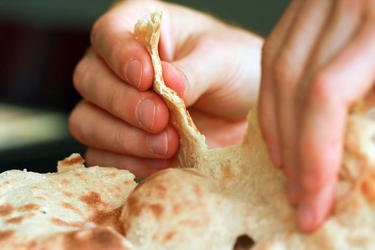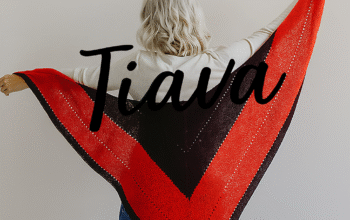Bread is more than food it’s a story baked into human civilization. For thousands of years, bread has served as daily sustenance, a cultural symbol, and even a spiritual offering. At the core of this story are two fundamental types: leavened bread and unleavened bread. One rises tall and fluffy, the other stays flat and simple. Both, however, carry remarkable importance across history, nutrition, and faith.
This in-depth guide explores everything you need to know about leavened bread and unleavened bread their differences, origins, health effects, and how they continue to shape diets worldwide.
What Is Leavened Bread?
Leavened bread is bread that rises through the use of yeast, sourdough starters, or chemical agents like baking soda. The process of leavening fills the dough with gas bubbles, making it soft, airy, and flavorful.
Common Types of Leavened Bread
- Sourdough A naturally fermented bread with tangy flavor.
- Baguette A French staple with a crisp crust and airy crumb.
- Brioche A rich, buttery loaf often used for desserts.
- Pita When puffed, it forms a pocket for fillings.
- Sandwich bread Soft and versatile, used worldwide.
Why Leavened Bread Is Popular
Leavened bread offers:
- Texture: Soft and chewy, ideal for sandwiches and meals.
- Flavor: Fermentation develops unique, complex notes.
- Variety: From rustic loaves to enriched sweet breads.
The Science Behind Leavening
When flour mixes with water, gluten proteins form a stretchy network. Adding yeast or starter introduces fermentation. Yeast consumes sugars in the dough, producing carbon dioxide and ethanol. The gas gets trapped in the gluten web, expanding the dough. Baking locks in this airy structure.
Two primary methods exist:
- Natural leavening Using wild yeasts and bacteria (sourdough).
- Commercial leavening Using packaged yeast or baking powder.
This scientific magic transforms dense dough into fluffy loaves that define modern bakeries.
What Is Unleavened Bread?
Unleavened bread contains no yeast or raising agents. Instead of rising, it stays flat, dense, and simple. Its preparation requires only flour, water, and heat, making it one of the oldest and easiest forms of bread.
Common Types
- Matzo Traditional Jewish bread eaten during Passover.
- Chapati Indian whole wheat flatbread.
- Tortillas Corn or flour-based, a staple in Latin America.
- Roti A soft round bread from South Asia.
- Lavash A slender type of flatbread originating from Armenia and the regions of the Middle East.
Key Characteristics
- Quick to prepare No rising time.
- Practical Long shelf life and simple ingredients.
- Versatile Can serve as wraps, scoops, or crisp bases.
Cultural and Religious Significance
Unleavened bread is more than just food it carries sacred meaning.
- Judaism: During Passover, Jews eat matzo to commemorate the Exodus from Egypt, symbolizing the haste in which Israelites fled without waiting for dough to rise.
- Christianity: In the Eucharist, unleavened bread symbolizes the body of Christ.
- Islam: Flatbreads like khubz are daily staples across the Middle East, often baked in communal ovens.
- India and South Asia: Roti and chapati remain central to daily meals, often eaten with vegetables, curries, and lentils.
Here, unleavened bread bridges faith, heritage, and sustenance.
Key Differences
Both breads serve different roles in culture and cuisine.
| Feature | Leavened Bread | Unleavened Bread |
| Leavening agent | Yeast, sourdough starter, baking powder | None |
| Texture | Light, airy, soft | Flat, dense, chewy |
| Preparation time | Hours (needs proofing) | Quick (minutes) |
| Flavor | Complex, tangy, layered | Simple, grain forward |
| Examples | Sourdough, brioche, baguette | Matzo, tortillas, chapati |
| Cultural role | Daily meals, bakery staples | Rituals, traditional diets |
In essence, leavened bread symbolizes abundance and complexity, while unleavened bread represents simplicity, speed, and faith.
The History of Leavened and Unleavened Bread
The First Breads: Unleavened Origins
Archaeologists discovered charred remnants of flatbread dating back 14,000 years in Jordan. These early breads were unleavened grains mixed with water and baked on hot stones.
Discovery of Leavening
Around 1500 BC, Egyptians noticed that dough left out in the open naturally rose. Wild yeast from the air fermented it, creating the first leavened bread. This breakthrough marked a turning point in food history, leading to softer, flavorful loaves.
Bread in Ancient Civilizations
- Egypt: Mastered sourdough fermentation and communal ovens.
- Greece & Rome: Expanded bread making with specialized bakeries.
- Middle East: Preserved flatbread traditions like lavash and pita.
- Asia & Africa: Unleavened breads such as injera (Ethiopia) and roti (India) shaped culinary identities.
Bread became currency, offering, and identity far beyond sustenance.
Health Aspects
Both breads offer health benefits depending on preparation and ingredients.
Leavened Bread Health Benefits
- Fermentation lowers gluten levels, making it easier to digest.
- Sourdough has a lower glycemic index than white bread.
- Probiotic cultures in natural starters may improve gut health.
Health Benefits
- Often made with whole grains, rich in fiber and minerals.
- Quick to prepare, with fewer additives.
- Longer shelf life for storage and travel.
Case Study: A 2021 food science review found that people consuming sourdough reported fewer digestive issues compared to commercial yeast breads, while whole wheat chapati provided higher daily fiber intake in South Asian diets.
When to Use Leavened and Unleavened Bread
- Everyday meals: Sandwiches, pizza, burgers leavened bread.
- Quick meals: Wraps, scooping curries unleavened bread.
- Religious rituals: Passover (matzo), Eucharist unleavened bread.
- Cultural cooking: Mediterranean mezze (pita), Indian thali (roti).
How to Make
Making leavened bread takes patience but rewards you with flavor.
Steps:
- Mix flour, yeast, water, and salt.
- Knead until smooth.
- Let proof for 2–12 hours.
- Shape and bake.
Tips:
- Use warm water (not hot) for yeast activation.
- Long fermentation adds complex flavor.
- Steam in the oven creates a crusty loaf.
How to Make
Perfect for busy cooks, unleavened bread is simple.
Steps:
- Mix flour, water, and salt.
- Roll into thin rounds.
- Cook on a hot skillet.
Popular Types:
- Tortillas Used for tacos and wraps.
- Chapati Served with curries and lentils.
- Matzo Crisp bread used during Passover.
Tips:
- Add oil for softer texture.
- Experiment with herbs or garlic for flavor.
- Store in a cloth to keep fresh.
Leavened and Unleavened Bread
Today, both bread types thrive.
- Artisan sourdough has exploded in popularity, especially during the pandemic.
- Flatbreads dominate street food culture, from shawarma wraps to quesadillas.
- Fusion cuisines now blend traditions naan tacos, sourdough pizzas, or lavash wraps.
Bread is global, uniting tradition and innovation.
Conclusion
The story of leavened bread and unleavened bread is a journey of culture, survival, and innovation. Leavened bread gives us fluffy loaves and endless variety, while unleavened bread offers simplicity, tradition, and spiritual meaning. Both remain vital to global diets and rituals.
Next time you eat bread whether a slice of sourdough or a chapati—you’re not just enjoying food. You’re taking part in a tradition thousands of years old, connecting with cultures across time and geography.



